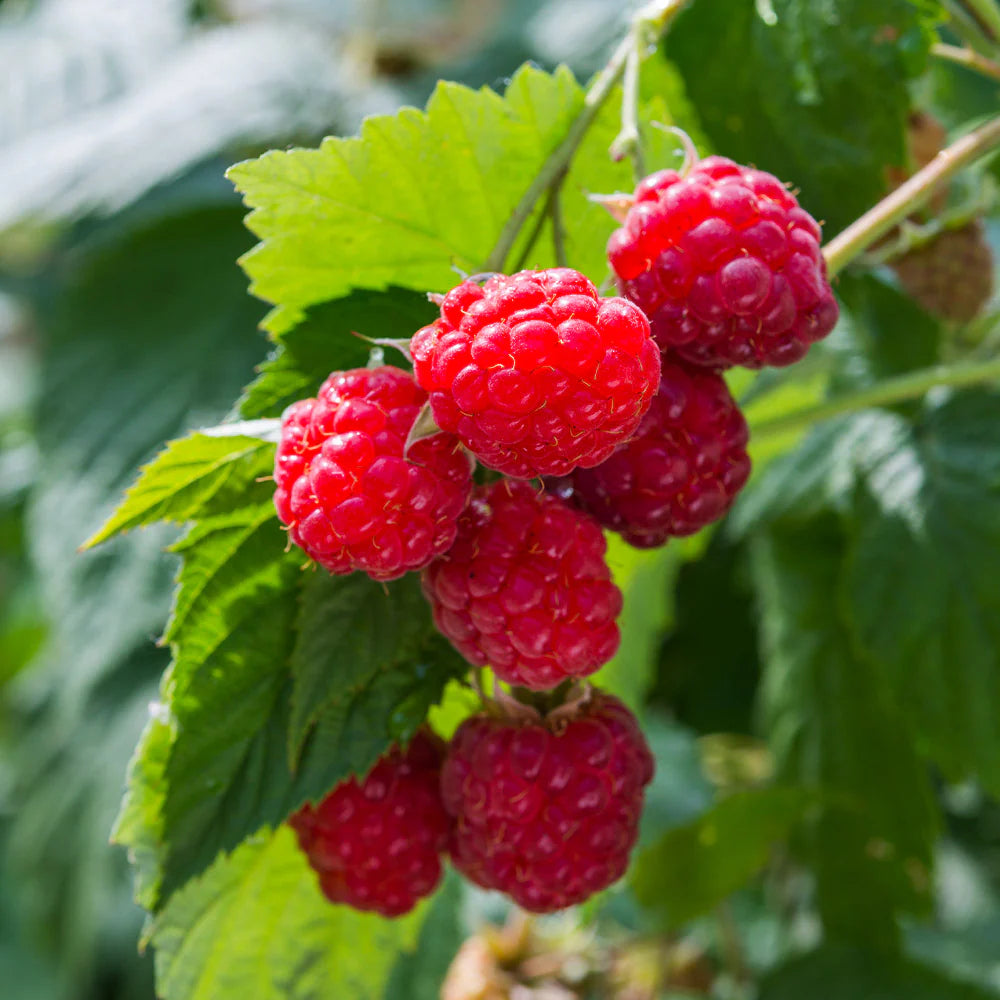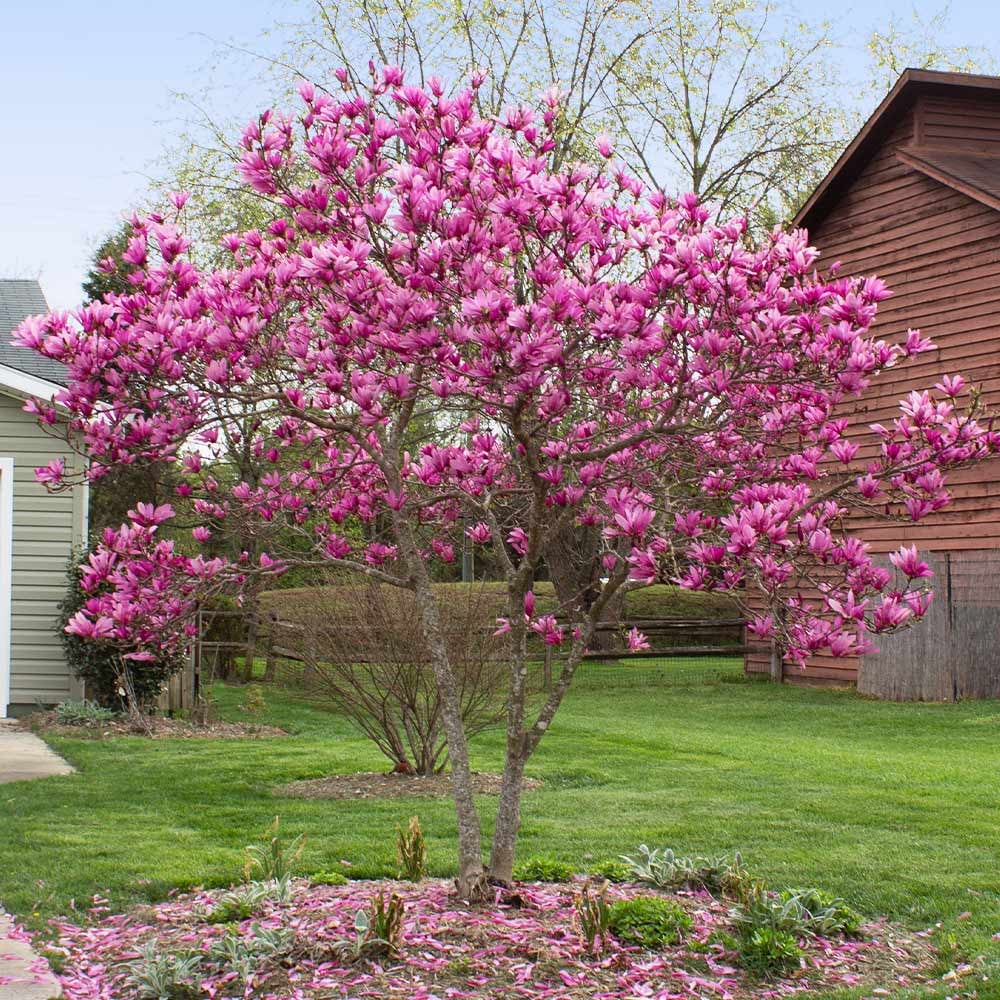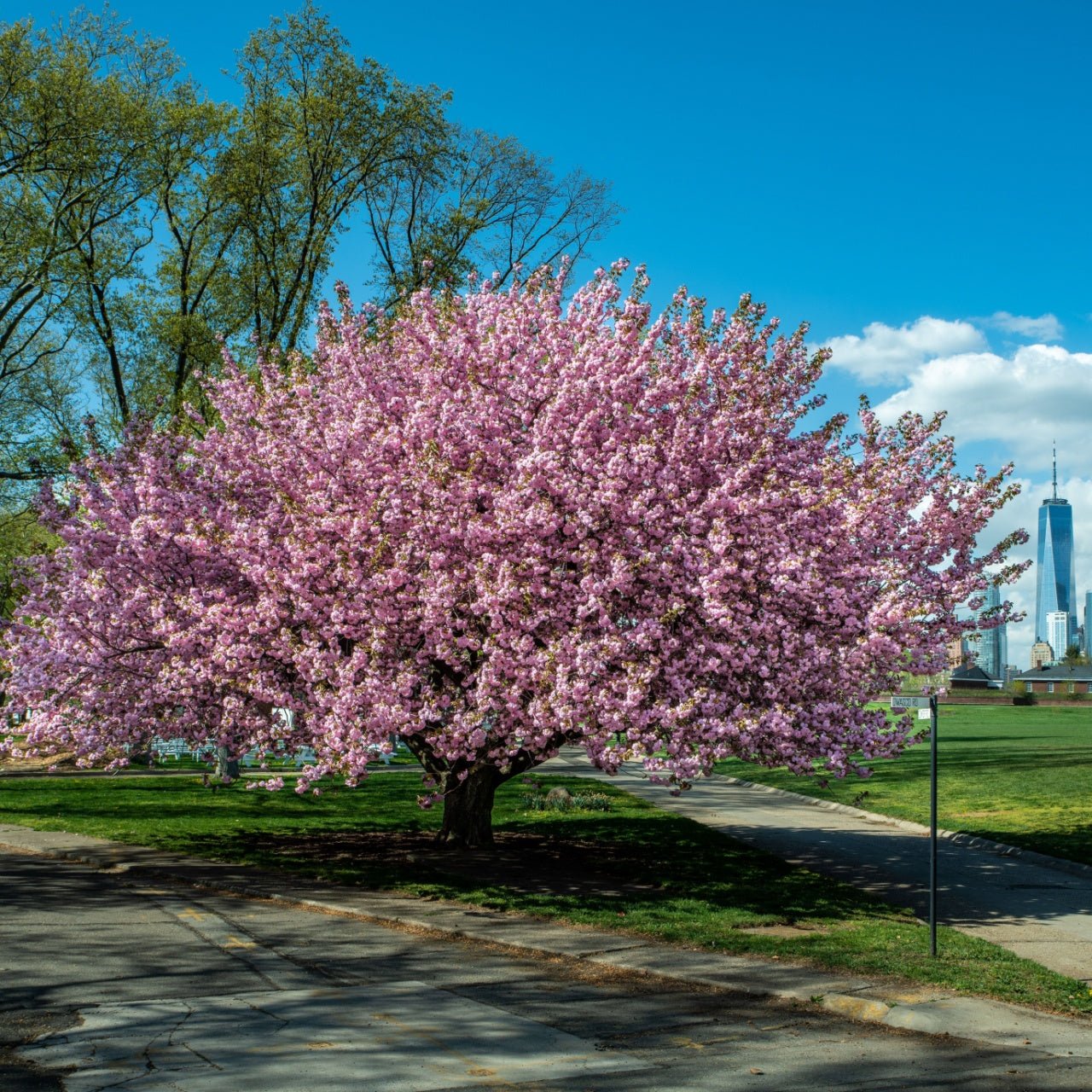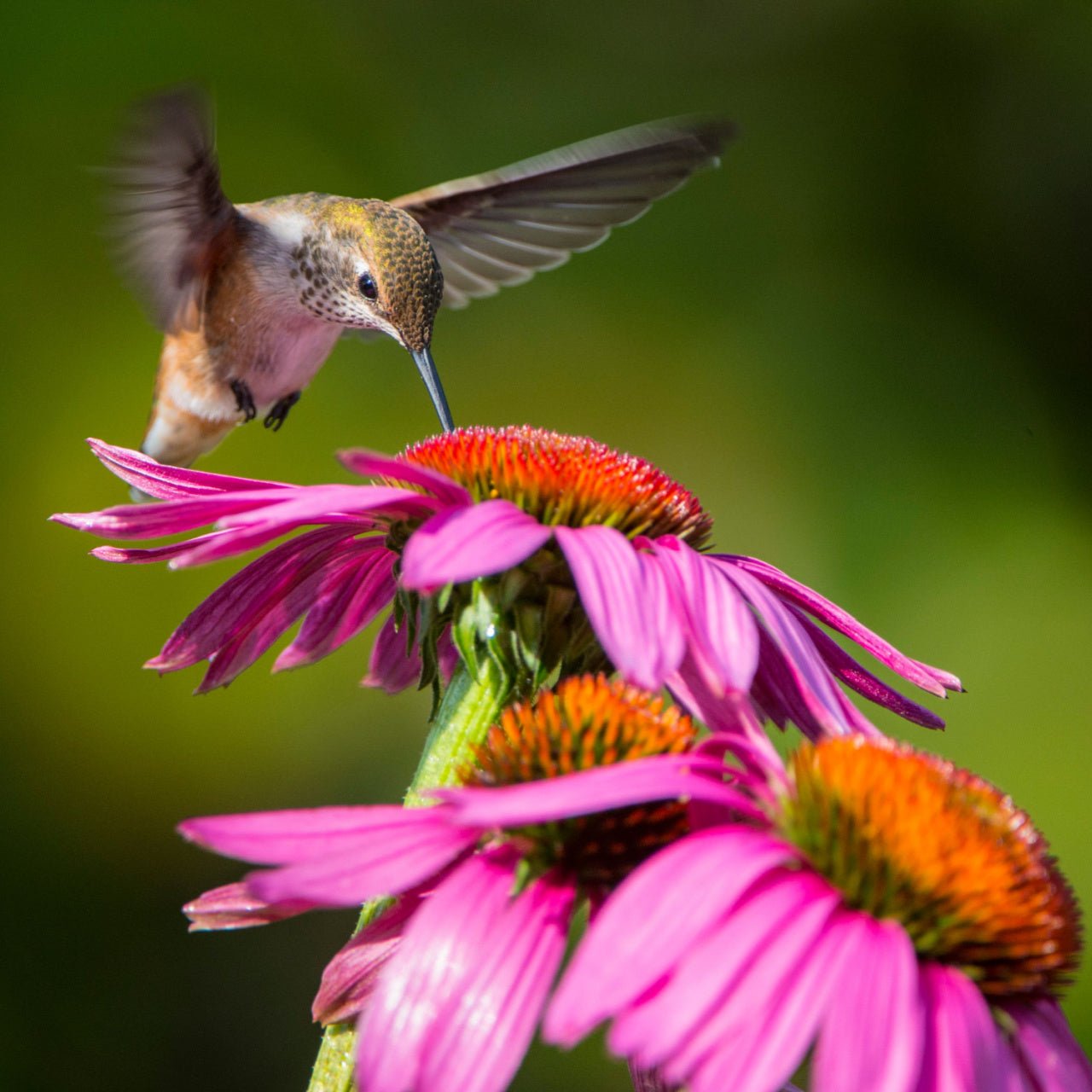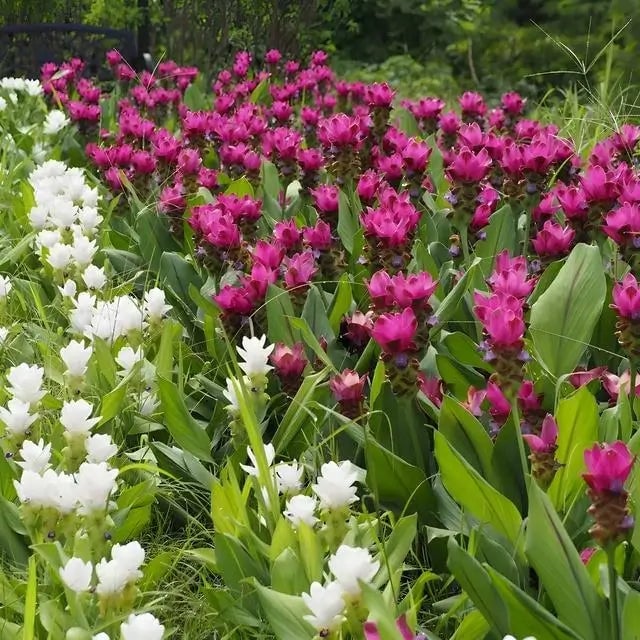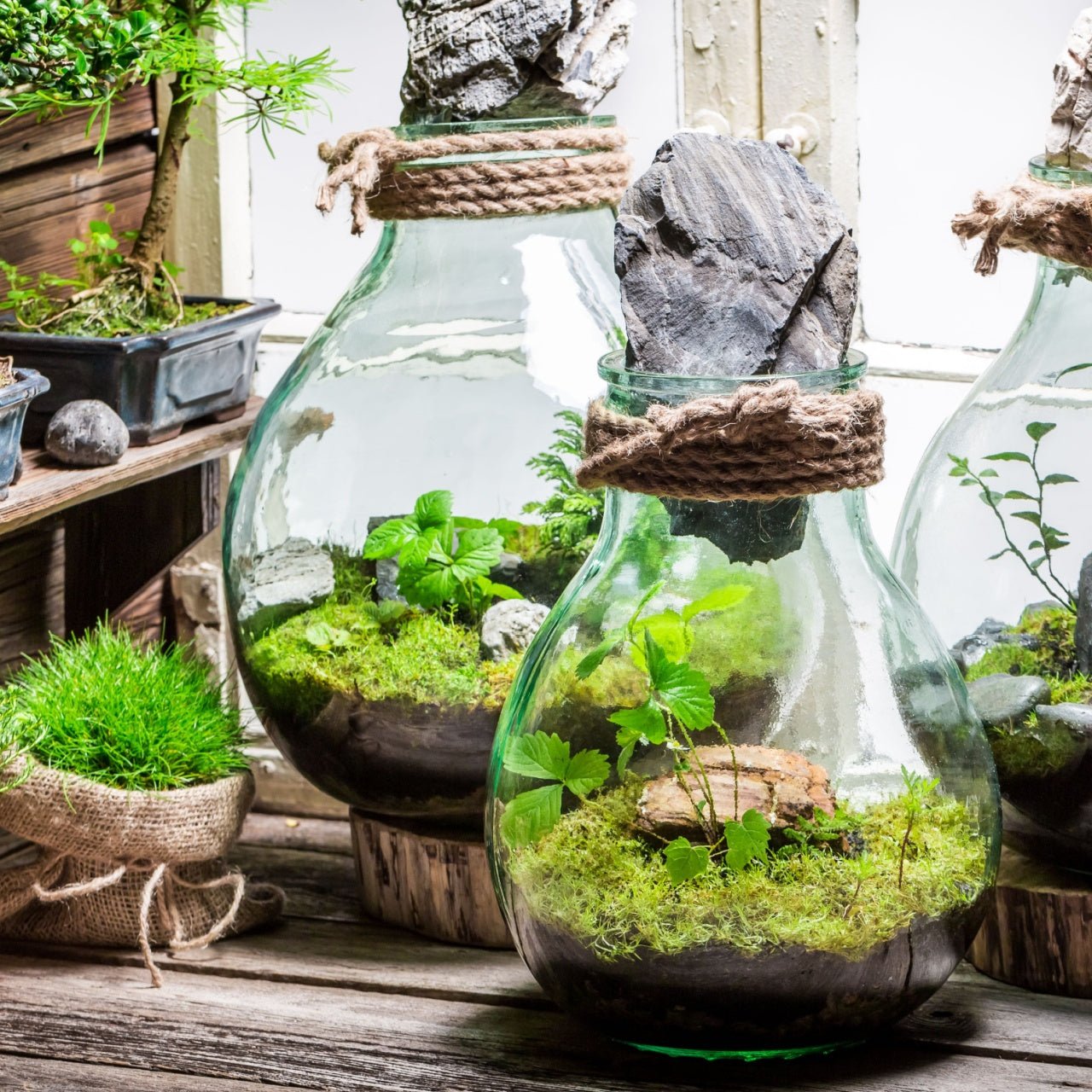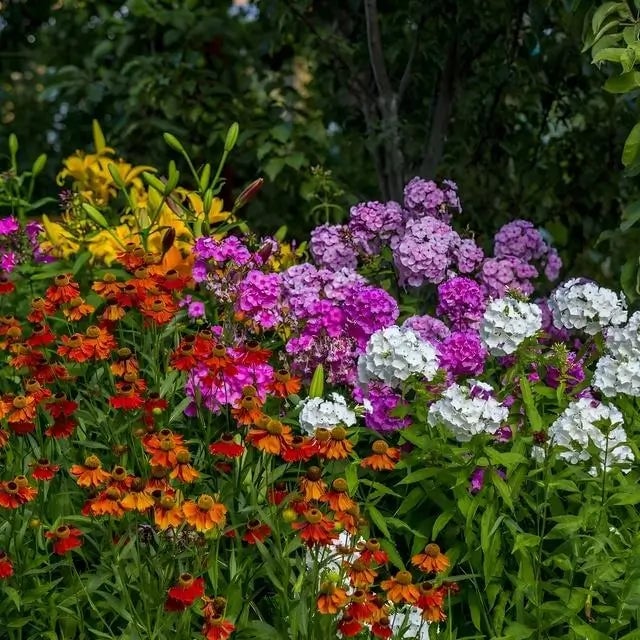
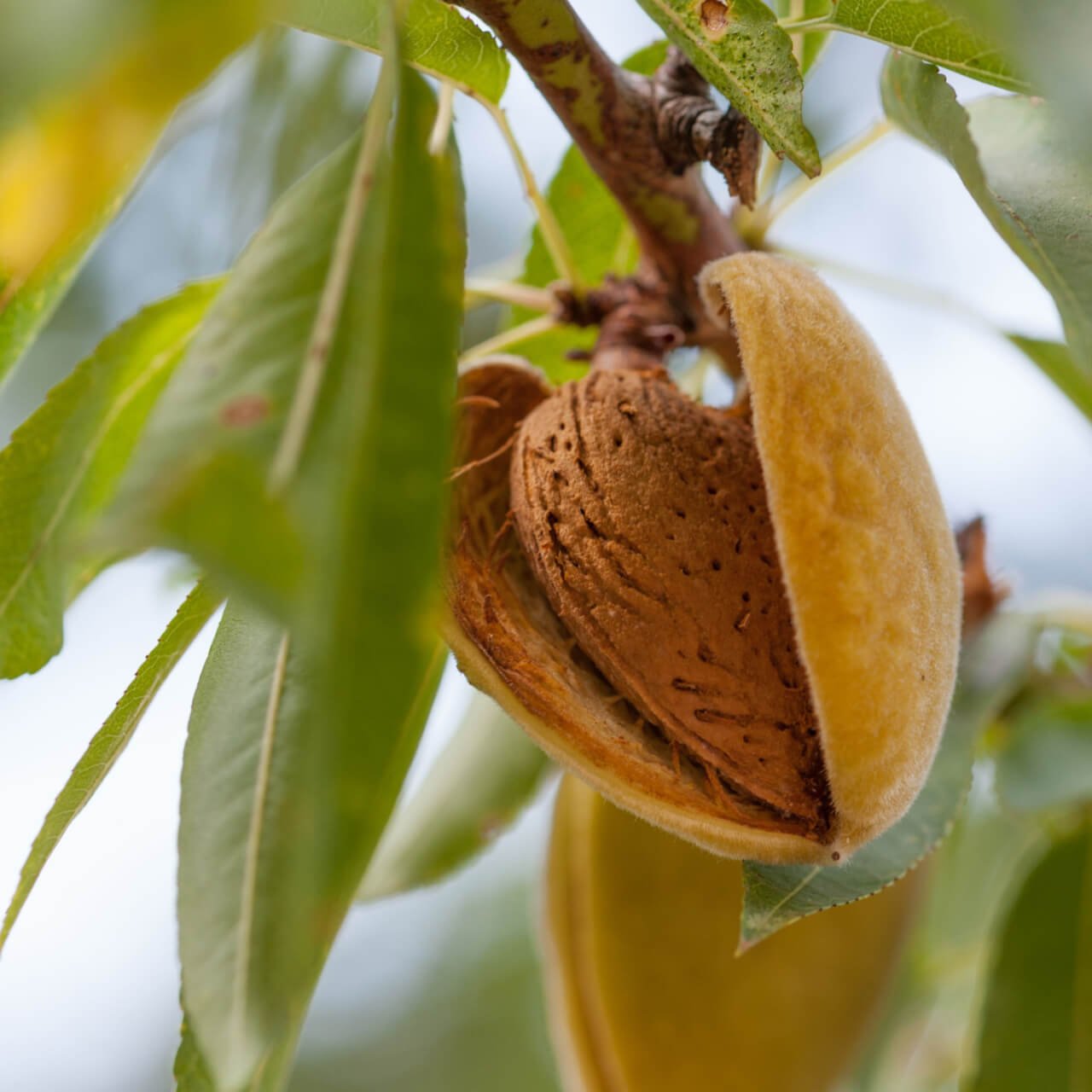
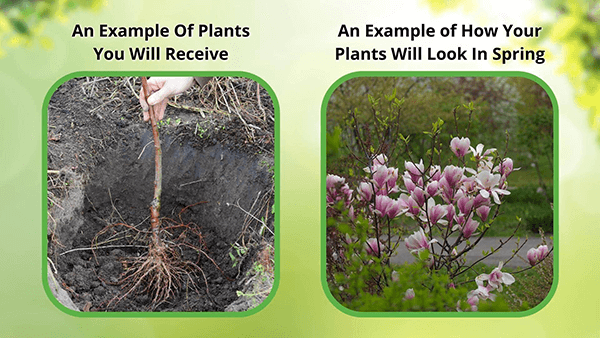
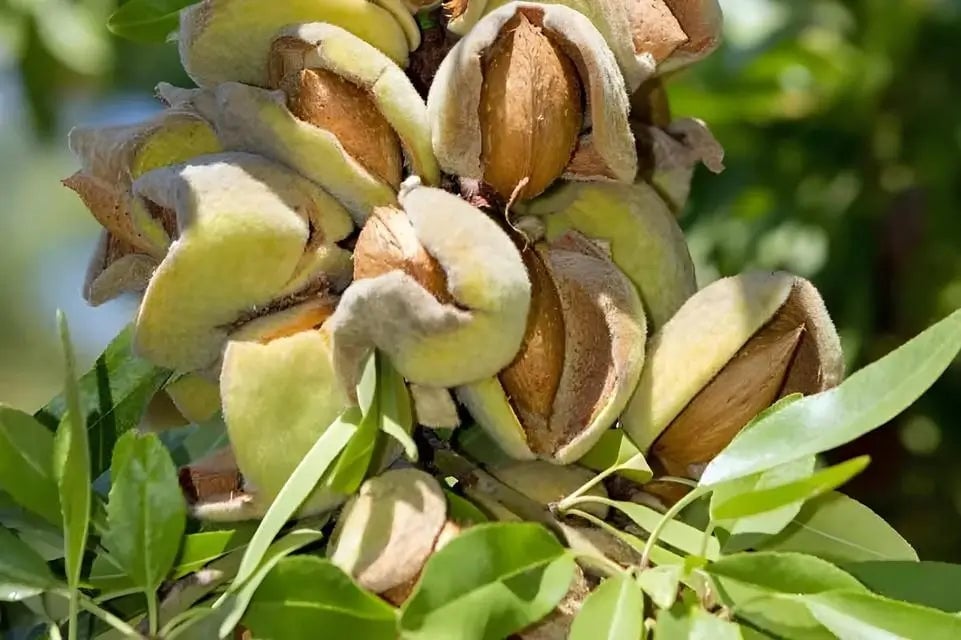

Hall's Hardy Almond Tree
Thrives in Zones 5 - 10
Attracts bees and pollinators
Beautiful, fragrant spring blooms
Drought-tolerant once established
Ships in
Spring 2026Hall's Hardy Almond Tree - Prunus dulcis
The Hall's Hardy Almond Tree is an ancient tree. It is one of the earliest domesticated fruit trees, and is rarely found wild in its original setting. There is even archaeological evidence of domesticated almond trees found from the early bronze age in the middle east – so this tree truly has been feeding us for centuries. It is in the peach family, and has blooms similar to that of the cherry. Its fluffy, light pink flowers grace the branches in spring, filling the air with their sweet fragrance.
Plant Details - Hall's Hardy Almond Tree
Family: Rosaceae
Light Requirement: Full sun
Water Needs: Moderate
Height: 10-15 ft
Spread: 10-20 ft
Growth Rate: Moderate, Fast
Soil Preference: Fertile, Well draining
Season of Interest: Spring
Flower Color: Light Pink, White
Fruit: Drupes (Almonds)
Wildlife Value: Birds, Small mammals, Bees, Butterflies
Notable Characteristics - Hall's Hardy Almond Tree
The Hall's Hardy Almond Tree is a beautiful and unique tree. It bears fruit that has no flesh but is considered a drupe, as it has a stone “pit”. Where the flesh is on a peach or plum is instead a soft, woody exterior which dries out as the season continues. As it dries, it breaks open to reveal the almond in its shell which can then be broken open. Therefore, almonds are not actually considered a nut, they are actually a drupe. The tree itself has woody, medium sized branches in a warm brown. The leaves are long and oval shaped with pointed tips, and are a glossy, bright green. The flowers are white or very light pink, somewhat resembling cherry blossoms, and are beautifully fragrant.
Landscape and Maintenance
This glorious tree is native to the Mediterranean because it thrives in warm, dry summers and mild, wet winters. Currently, California is responsible for growing 80% of the world's almonds, but the trees require a high amount of acreage and water to thrive. Given the increase in drought and temperature due to climate change, almond trees are likely to be on the decline. The Hall's Hardy Almond Tree provides early season nectar to hungry pollinators like bees and butterflies, and the almonds that drop as its husk dries out provides food for birds and small mammals. This fragrant, showy tree is an absolute gem to grow in your yard.
This Is How Your Plants Will Look upon Delivery

Bloom Season
Spring
Bloom/Foliage Color
White
Height at Maturity
Under 25 Feet
Care
Almond Tree needs full sun, well-drained soil, and regular pruning.
Plant Reproduction
Almond Tree (Prunus dulcis) spreads primarily through seed dispersal.
How to Grow and Care for Fruit Trees
Fruit trees are a rewarding addition to any landscape, offering fragrant blossoms in spring and fresh, homegrown harvests in summer or fall. Popular varieties like apple, peach, pear, and plum thrive in full sun and well-drained, nutrient-rich soil. Choose trees suited to your USDA zone, and plant in early spring or fall for the best root development.
Dig a hole twice as wide as the root ball and deep enough so the root flare sits just above the soil line. Backfill with native soil, water deeply, and apply mulch around the base—keeping it a few inches from the trunk—to retain moisture and suppress weeds. Water regularly during the first growing season, especially during dry spells.
Prune annually to shape the tree, improve air circulation, and boost fruit production. Fertilize in early spring with a balanced or fruit-specific fertilizer. With proper planting, seasonal care, and a little patience, fruit trees will reward you with beauty, shade, and bountiful harvests year after year.
Shipping date depends on the date displayed and chosen when you order from the product's page.
We do not accept returned plants. If you purchased an extended warranty we do accept claims, please navigate to the warranty page for instructions HERE







Nutritional Benefits:
Almonds are packed with vitamins, minerals, and healthy fats. Growing your own almond tree ensures a fresh supply of this nutritious superfood right in your backyard.
Self-Pollinating Variety:
Many almond tree varieties are self-pollinating, meaning you don’t need multiple trees to produce nuts. This makes them a practical option for smaller gardens or urban settings.
Beautiful Blossoms:
Almond trees are known for their stunning, delicate pink or white flowers that bloom in early spring. These blossoms add a touch of beauty and elegance to any garden.
Investment for the Future
An almond tree can provide you with nuts for many years. It’s a long-term investment that offers both aesthetic and practical benefits for your home.
Header
Use this content to share information about your store and products.
Frequently asked questions
Still have a question? Contact us here.
Yes, we ship all over the world. Shipping costs will apply, and will be added at checkout. We run discounts and promotions all year, so stay tuned for exclusive deals.
It depends on where you are. Orders processed here will take 5-7 business days to arrive. Overseas deliveries can take anywhere from 7-16 days. Delivery details will be provided in your confirmation email.
You can contact us through our contact page! We will be happy to assist you.








